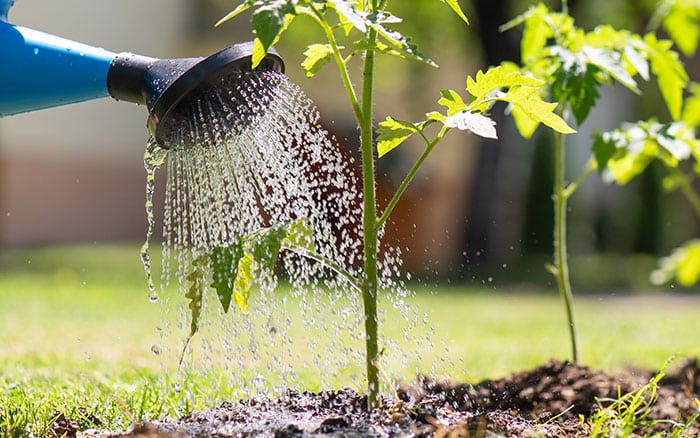Tomatoes are one of the most rewarding crops to grow. Especially when you’re picking juicy fruits straight from your own greenhouse or garden. But to keep your plants healthy and productive, it’s important to manage their leafy growth, particularly at the base.
One proven technique is removing the lower leaves. It may seem a bit drastic at first, but it makes a world of difference.
Here’s why it works and how to do it right.
Better Airflow
Tomatoes thrive in warm conditions, but they don’t like humidity. When leaves crowd the base of the plant, airflow is reduced. This traps moisture and creates the perfect environment for fungal diseases such as blight, botrytis and leaf mould.
By carefully removing some of the lower leaves, you’ll improve circulation around the stem. As a result, the plant stays drier and healthier. This is especially helpful if you’re growing in a greenhouse or polytunnel where humidity can build up quickly.

Water Splashing Leaves
Lower leaves often get splashed with water or soil during watering or heavy rain. This is how diseases like early blight often get their start.
Removing the leaves closest to the soil helps reduce the risk. Without those leaves acting as landing pads for spores, your tomatoes are better protected from the ground up.
More Energy for Fruiting
Tomato plants only have so much energy to spare. When lower leaves age, turn yellow or become shaded, they stop being helpful. In fact, they can begin to use more energy than they provide.
By pruning these older leaves, the plant can focus its resources on fruit production. This means more energy goes into flowering and ripening, not feeding parts of the plant that have already done their job.

Easier Harvesting and Maintenance
Fewer leaves around the base also make it much easier to check on your plants. You can spot pests more quickly, harvest ripening fruit with ease and even help with manual pollination if needed.
More sunlight can also reach the middle of the plant. This improves ripening and reduces the risk of uneven fruit development.
Will it Harm Photosynthesis?
Some gardeners worry that pruning might reduce the plant’s ability to photosynthesise. Thankfully, that’s not usually the case.
The upper leaves do most of the work. They’re younger, healthier and better positioned to capture sunlight. Meanwhile, the lower leaves are already starting to fade. Removing them allows the plant to reallocate energy where it matters most.
Plants are remarkably adaptable. They naturally adjust as you remove older leaves, redirecting nutrients and resources to the parts still doing the heavy lifting.

When and How to Remove Leaves
Start pruning once the first fruits begin to set, usually around the first or second truss of flowers. At this point, the plant has already gained strength from its base leaves and is ready to shift gears into fruiting mode.
Here’s how to do it:
- Remove leaves below the lowest fruiting truss.
- Use clean, sharp scissors or secateurs.
- Be gentle to avoid damaging the main stem.
- Don’t overdo it; take off one or two leaves a week on outdoor plants.
- In greenhouses, it’s common to strip the lower third of the plant by mid to late summer
That balance of pruning and patience is the key to strong, productive tomato plants.

Tomato plants are clever and robust, but they benefit from a helping hand. Removing lower leaves is a simple step that can make all the difference to plant health, fruit quality and ease of care.
With a little confidence and the right timing, you’ll soon see the benefits for yourself.
For more great gardening advice, make sure you head to my YouTube Channel. Make sure you’re subscribed with notifications on so you don’t miss any of my new videos.
Frequently Asked Questions
1 – Why should I remove the lower leaves from my tomato plants?
Lower leaves can trap moisture and encourage fungal diseases. Removing them improves airflow and helps the plant focus on fruit production.
2 – When is the best time to start pruning tomato leaves?
Begin after the first fruit has set. This is usually when the first or second truss of flowers has formed.
3 – Does removing leaves reduce photosynthesis?
No. The upper leaves do most of the photosynthesis. Lower leaves are often shaded and less efficient.
4 – How many leaves should I remove at once?
No more than one or two leaves per week on outdoor plants. This prevents stress and encourages steady growth.
5 – Can I remove all the lower leaves on greenhouse tomatoes?
Yes, it’s common to remove the lower third of the plant by mid to late summer to reduce humidity and disease risk.

Leave A Comment